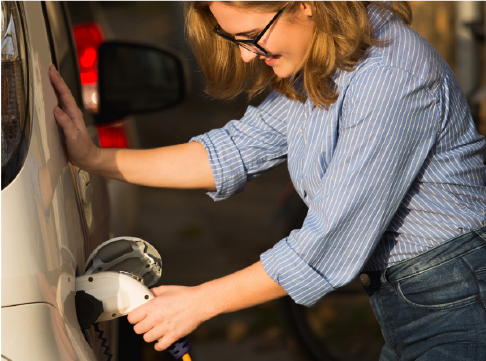Related News
Related News
-
EWEB prepares for wildfire season with risk mitigation measures
EWEB is building a more resilient electric system to weather various types of disasters, from wildfire to winter storms.
Find Out More -
Sustainability Snapshot - Homes for Good May 2025
Our first Sustainability Snapshop highlights a project where EWEB teamed up with longtime partner, Homes for Good, to deliver ductless heat pumps to income-eligible apartment rentals.
Find Out More -
EWEB, Lane County host open house to gather feedback for “Leaburg Transportation Alternatives Analysis”
“What is the Future of the Leaburg Dam Bridge?” open house exhibit on display at Lloyd Knox Park Visitor Pavilion through July 25
Find Out More -
Improving habitat resiliency throughout the Upper McKenzie
Environmental Responsibility is a core guiding value for EWEB decision-making. This summer, EWEB continues its commitment to environmental stewardship with a robust slate of habitat enhancement updates throughout the upper McKenzie River, across the footprint of the Carmen-Smith Hydroelectric Project.
Find Out More -
EWEB weighs multi-billion-dollar decision affecting energy supply
EWEB is weighing energy supply decisions that will cost nearly $2 billion over the next two decades.
Find Out More -
EWEB opens applications for 2025 Electric Mobility Community Grant
The Eugene Water & Electric Board is now accepting applications for the 2025 Electric Mobility Grant, reinforcing EWEB's commitment to sustainability and cleaner transportation.
Find Out More -
Walterville Hydroelectric Project to remain offline through 2025
EWEB continues to pursue repair plans but must fulfill additional investigation requirements before resuming operation.
Find Out More -
Greenpower subscribers vote to award Greenpower Grant to SquareOne Villages
The Greenpower Grant, funded solely by voluntary customer subscriptions, supports local sustainability projects.
Find Out More -
EWEB reaffirms commitment to resilience with Wildfire Mitigation Plan approval
The utility is testing new equipment, leveraging technology, and incorporating third-party expertise to bolster electric system resiliency to a range of threats, including wildfire.
Find Out More -
Vote now for the winner of the 2025 Greenpower Grant
Get ready to cast your vote for the winner of the 2025 Greenpower Grant. EWEB is excited to announce the eligible candidates for this year's grant award! The winner of the Greenpower Grant will be voted on by Greenpower subscribers. Learn more about each origanization and their proposal before casting your vote.
Find Out More -
How EWEB’s Fleet Services reached 200,000 hours without a lost time injury
EWEB’s Fleet Services team reached a major safety milestone: 200,000 work hours without a workplace injury that results in an employee losing at least one full day of work.
Find Out More -
EWEB cuts greenhouse gas emissions from operations 55% since 2010
Switching to renewable fuels in EWEB’s fleet operations has played a key role in reducing the utility's greenhouse gas emissions.
Find Out More -
Energy conservation could offset large portion of growth in power demand
Preliminary results of an EWEB study indicate that cutting back demand can contribute to maintaining a reliable, affordable energy supply.
Find Out More -
Groups suing EWEB will burden customers with litigation-driven costs
EWEB expresses disappointment that groups choose court over collaboration and firmly disputes the claims made in the lawsuit relating to operation of the utility’s Carmen-Smith Hydroelectric Project nearly 70 miles east of Eugene. EWEB takes its environmental and public safety responsibilities seriously. Contrary to the assertions in the lawsuit, construction of fish passage was postponed because EWEB’s regulator, the Federal Energy Regulatory Commission (FERC), required the utility to study and resolve urgent dam safety issues first.
Find Out More -
EWEB offers Greenpower Grant to support local sustainability project
The Greenpower Grant, funded by voluntary customer subscriptions to Greenpower, not customer grants, supports projects that advance renewable energy, clean energy education or efforts to reduce or offset local carbon emissions.
Find Out More - Show More
EWEB is Exploring the Impacts of Widespread Electrification in our Community
November 09, 2021

Electrification is a term for upgrading technologies that run on fossil-fuels, like gasoline vehicles and natural gas heating, with alternatives that run on electricity, like electric vehicles and heat pumps.
Here in Eugene, where we are fortunate to have one of the cleanest power portfolios in the nation, electrification presents opportunities to reduce greenhouse gas emissions and support climate recovery goals. But there are also potential impacts on power supply resources and local infrastructure.
In early 2020, EWEB initiated a two-phase study to help quantify the benefits and impacts of widespread electrification in our community. The purpose of the study is to inform future utility decisions related to electricity supply planning, customer programs and rate design.
The Phase 1 report was complete in October 2020, and Phase 2 was completed and presented to EWEB's Board of Commissioners in November 2021 (watch the presentation video here).
The study focuses on electrification of passenger vehicles and existing buildings that use natural gas for space and water heating in EWEB's service territory and analyzes value from the perspective of the individual customer, EWEB ratepayers, and society as a whole.

What does the study tell us?

1. Electrification reduces carbon emissions
Today approximately 90% of EWEB's power comes from carbon-free resources, making upgrading from gasoline and natural gas an effective way to reduce greenhouse gas emissions that are contributing to climate change.

EWEB's study concludes that Eugene residents could reduce community carbon emissions by 45% compared to 2017 levels, primarily through EV adoption. Aggressive changes across all sectors (including the natural gas sector by increasing use of Renewable Natural Gas), could lead to even greater carbon reductions—60% compared to 2017 levels.
It's important to note that building and vehicle electrification are only part of a larger community-wide decarbonization strategy. Other potential carbon reductions outside of this study include improving energy efficiency of buildings through upgrades to windows and insulation, replacing old heating and cooling system with a high-efficiency equipment, increasing use of bikes and other forms of micro-mobility, and reducing non-combustion GHGs (like methane leaks). All are key parts of the pathway to a low-carbon future.

2. Electric vehicles and heat pump water heaters deliver the most benefits
EWEB's study analyzed the simple payback periods (upfront costs divided by annual savings) of transportation and building electrification and found that the most financially beneficial electrification opportunities come from electric vehicles and heat pump water heaters.

3. The benefits of space heating electrification are more complex
EWEB studied several kinds of space heating systems and found that different ducted heat pumps have trade-offs between upfront costs and carbon reduction. Without significant policy incentives, upgrading gas space heating systems to electric has a net cost to the customer over the equipment lifetime, making it less likely that customers will retrofit existing buildings. However, all the heat pump technologies studied deliver significant carbon reduction benefits, and some customers may feel that the climate benefits outweigh the costs. EWEB's study concluded that future incentives or mandates that alter the current economics could lead to higher levels of electrification and therefore greater carbon savings.
4. The benefits of Electric Vehicles are significant on all counts
Technology improvements, regulatory policies and vehicle manufacturer trends are all driving significant adoption of electric vehicles. By 2040, 85-95% of the vehicles on the road could be electric. EWEB's study finds EVs provide benefits to vehicle owners, other electric ratepayers and society as a whole:
- All EVs, regardless of vehicle type, are expected to become cheaper than gas-powered cars before 2030.
- Because of EWEB's nearly carbon-free power, upgrading vehicles from gas to electric power can reduce air pollution and create a better, cleaner environment.
- By 2040, EV adoption could cut Eugene's total carbon emissions by almost 40%.

5. EWEB customers consistently benefit from electrification
Upgrading from gasoline and natural gas to electric power can have beneficial effects on the price of electricity charged to EWEB customers, as increased electric revenues can be used to cover the fixed costs of the utility, reduce rates or pay for infrastructure investments.
However, under very high electrification scenarios, EWEB might have to purchase additional power resources or build additional infrastructure to meet electricity needs. While EWEB has near term capacity to handle additional load from electrification, we need to plan for long-term impacts to maintain affordability for our customers.
6. EWEB can handle the forecasted pace of electrification
While EWEB's average load has declined since 2005, electrification has the potential to reverse that trend. The study finds that the pace of customer-driven electrification, if based on economic value alone, will be slow in the next decade, with EV adoption appearing to be the most likely and impactful. In the next several years, EWEB has enough surplus energy and adequate infrastructure to meet our customers' electrification needs and the upcoming Integrated Resource Plan (IRP) can help EWEB plan for the electricity supply needs of the future.
7. Charging EVs during "off-peak" times is critical
Managing peak electricity demand is a critical component of achieving climate recovery goals and keeping energy affordable for all customers.
Peak power—when the highest level of electricity is consumed in our region within a specific timeframe—is more expensive, affecting power supply and infrastructure costs and, ultimately, customer bills. The power supply during peak times also has higher greenhouse gas emissions, which contributes to climate change.
One key to managing peak impacts is to increase public and workplace charging during the middle of the day, shifting EV charging away from EWEB's existing 8 a.m. and 6 p.m. peaks. This can be done by increasing daytime public and workplace charging between the morning and evening peaks as well as shifting home charging to after 10 p.m. Increasing public or shared charging infrastructure can also be helpful for people without access to home charging such as customers who live in apartments.
EWEB is already engaged in some of this peak mitigation work. We offer a Level 2 charger rebate which can help our customers schedule their vehicle charging to after 10 p.m. In the upcoming year, we will be working with community partners to expand workplace and public charging infrastructure.
What's next?
The study is part of EWEB's larger and ongoing Electricity Supply Planning (ESP) effort. Electricity Supply Planning includes a broad set of actions, such as evaluating power portfolio options, negotiating power purchase agreements, managing infrastructure, and developing customer products and services, all with the goal continuing to serve our community over the long-term with clean, affordable and reliable power. This electrification study helps EWEB understand our customer's demand for electricity in the future.
In 2022 EWEB will begin preparing our next Integrated Resource Plan, a process aimed at helping EWEB make decisions about long-term power generation resources. This electrification study will help us understand the potential impacts of electrification on those decisions.

